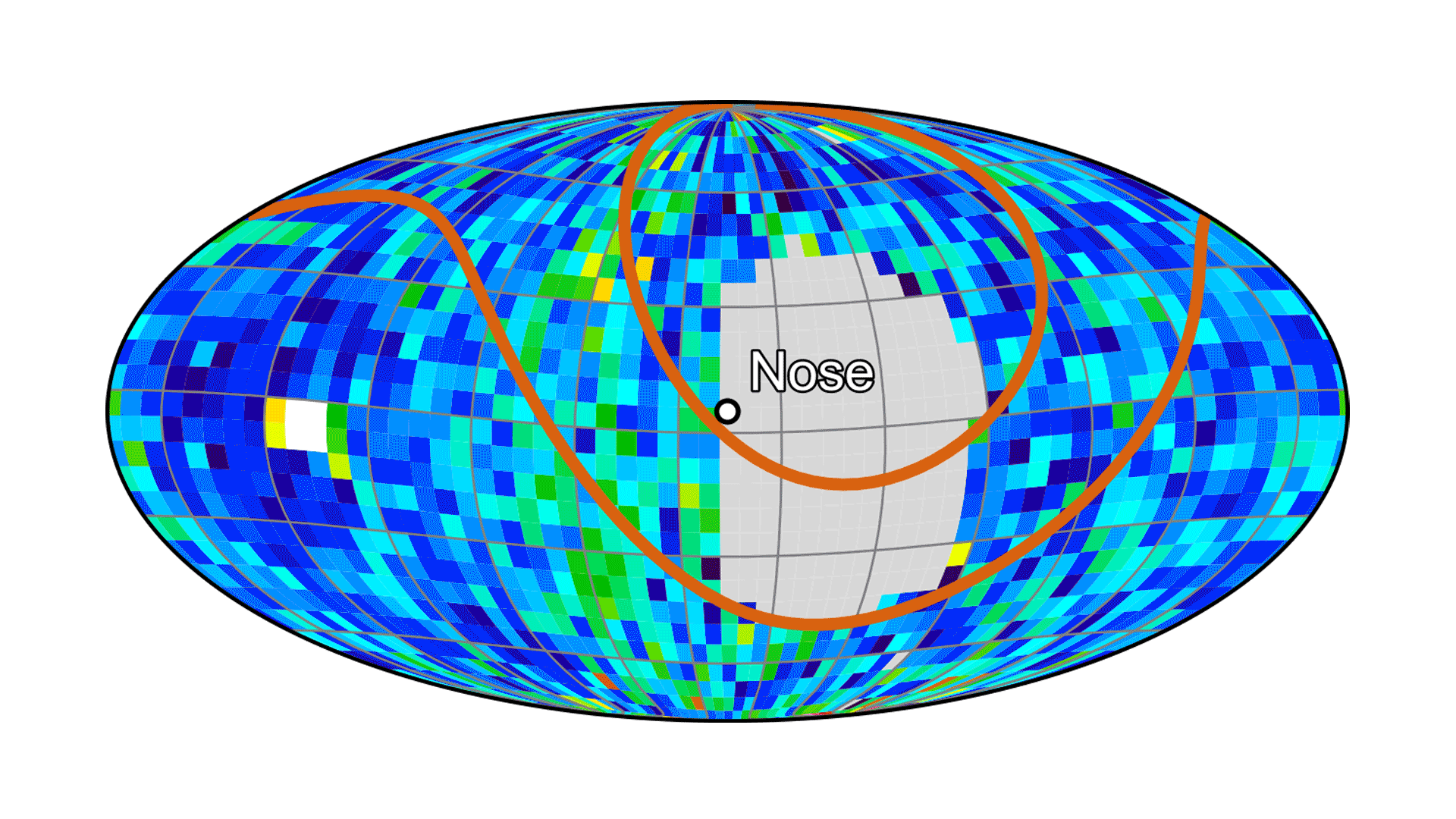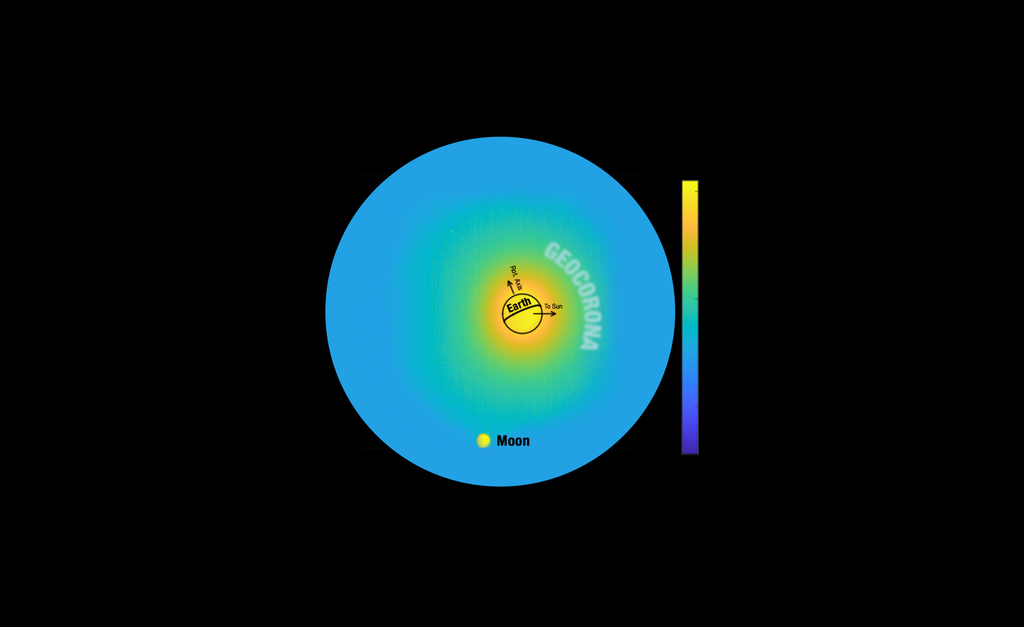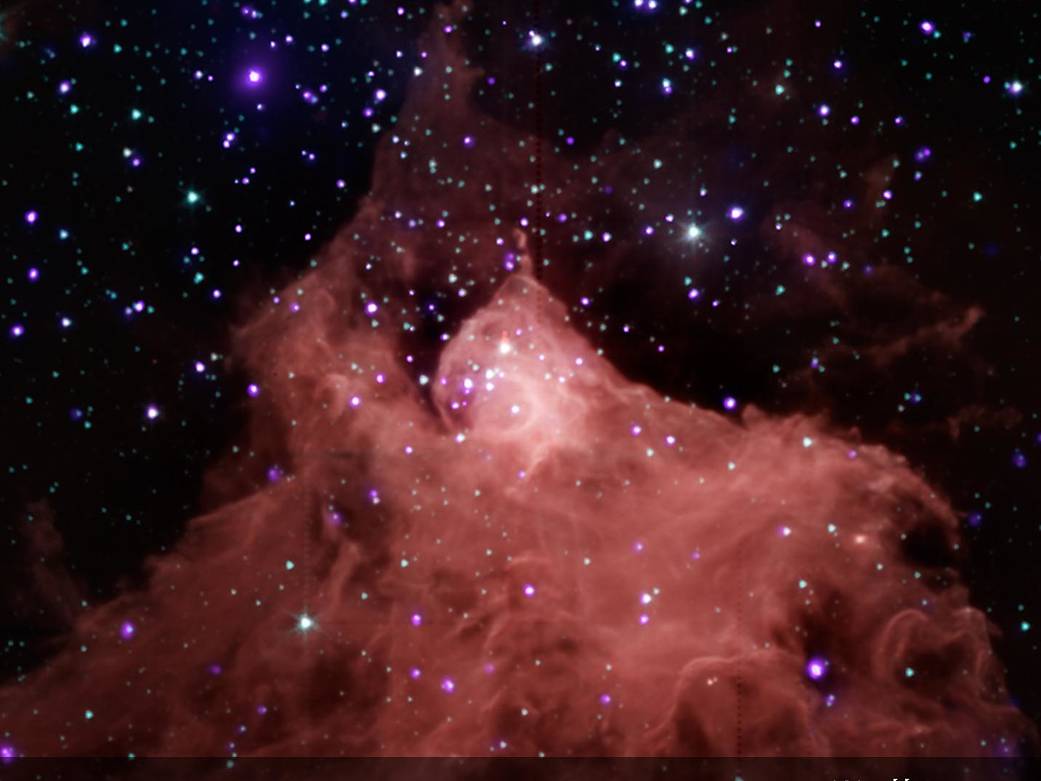Cepheus B, a molecular cloud located in our Milky Galaxy about 2,400 light years from the Earth, provides an excellent model to determine how stars are formed. This composite image of Cepheus B combines data from the Chandra X-ray Observatory and the Spitzer Space Telescope.
A molecular cloud is a region containing cool interstellar gas and dust left over from the formation of the galaxy and mostly contains molecular hydrogen. The Spitzer data, in red, green and blue shows the molecular cloud (in the bottom part of the image) plus young stars in and around Cepheus B, and the Chandra data in violet shows the young stars in the field.
The Chandra observations allowed the astronomers to pick out young stars within and near Cepheus B, identified by their strong X-ray emission. The Spitzer data showed whether the young stars have a so-called “protoplanetary” disk around them. Such disks only exist in very young systems where planets are still forming, so their presence is an indication of the age of a star system.
The new study suggests that star formation in Cepheus B is mainly triggered by radiation from one bright, massive star (HD 217086) outside the molecular cloud. According to the particular model of triggered star formation that was tested – called the radiation- driven implosion (RDI) model – radiation from this massive star drives a compression wave into the cloud triggering star formation in the interior, while evaporating the cloud’s outer layers.
For more information, visit https://www.nasa.gov/mission_pages/chandra/multimedia/photo09-062.html.Image Credits X-ray: NASA/CXC/PSU/K. Getman et al.; IRL NASA/JPL-Caltech/CfA/J. Wang et al.
2 min read

























